Opening 10 times with 1000U, holding a position value of 10000U; opening 5 times with 2000U, holding a position value of 10000U has the same value, but the liquidation price is different, so do not focus on the liquidation price in trading; what matters is the stop-loss.
Real cryptocurrency trading experts know that simplicity is the ultimate sophistication; repeating simple tasks leads to a high success rate of 98.8% in this short-term trading model, allowing you to easily turn 100k into 10 million, focusing only on this one model.
I know a friend from Fujian who enjoys short-term trading and is particularly passionate about many techniques. In just a few years, he has grown from small to large and is now making a living from trading cryptocurrencies. I have modified his 'techniques,' and this year, through practice, he has turned an initial capital of 170,000 into 40 million in less than a year. I am sharing this hoping it helps everyone!
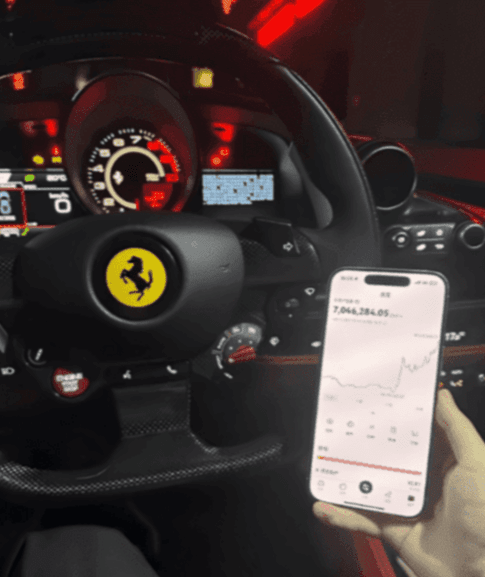
I have been trading cryptocurrencies for 10 years, making 60 million. To change your fate, you must try the cryptocurrency circle. If you cannot make money in this circle, ordinary people will have no chance in their lifetime.
Cryptocurrency trading methods:
1. Buy mainstream value coins with large positions, in spot (do not do contracts), regardless of whether they rise or fall, hold them for the medium to long term according to the entry price, combined with rolling strategies (adding or reducing positions)
When the market crashes, do not panic if the four-hour chart does not break the 20-day line for several reasons:
a. Exploding contracts: Without the ability, don't play with contracts lightly; it's completely different from spot data. Protecting your capital allows you to continue enjoying the benefits of a bull market!
b. Demand pullbacks: After mainstream value coins surge, they often need to pull back to the five-day moving average, or even the ten-day moving average, to build energy for further upward movement!
C. Cutting losses: Retail investors like to chase highs and sell lows. After retail investors chase high, the big players will quickly drop the price, scaring retail investors into cutting losses and handing over their chips.
2. For swing trades with profitable positions, reduce your position in advance, or sell in batches at high levels to lock in profits.
3: Pre-arrange the 5-day, 10-day, and 30-day moving averages at the daily level in batches to buy at low levels.
4: Based on the life-line trading method + judging the trend of rises and falls, if the trend changes and effectively breaks down, reduce your position in a timely manner when it pulls back to the life line.
5. During a surge, be aware of risks and avoid blindly chasing highs; during a plunge, be opportunistic and accumulate positions at low levels in batches.
6: For profitable positions, reduce the position appropriately to avoid roller-coaster trading; for bottom-fishing trades, it is recommended to set a stop-loss to protect your capital.
7: If the direction is unclear, it is better to miss out than to make a wrong move. Protecting your capital allows you to smile longer.
No more nonsense!
I share my trading strategies and insights with friends. There is a saying, standing on the shoulders of giants can save ten years of struggle. If you are destined to see this,
Friends who want to improve their trading skills should watch more and study seriously.
Viewing the market with a developmental perspective is a state of infinite potential.
How should this sentence be understood?
In simple terms, it means checking the computer from time to time to see if you can make a trade and earn some money.
I previously introduced intraday short-term trading, which has strategies and techniques that have gained popularity among many short-term enthusiasts; however, some forex friends feel that intraday short-term trading requires frequent chart observation, which is too tiring and exhausting.
They want to hold a trading position for a long time but do not want to constantly check the charts; they want to set larger profit targets while hoping to keep losses confined to a small range. So, is there such a trading method?
The answer is affirmative, that is swing trading.
Swing trading is a very popular type of trading that brings relatively little pressure to traders, yet offers very considerable returns, especially for part-time traders, making it the most perfect trading type.
But before introducing swing trading, I need to emphasize one point to everyone:
Regardless of the trading style, traders operate independently in the market, responsible for their own account funds, and cannot blame others even in losses. It cannot be said which style is better; it depends on which method you prefer and which suits you better.
Take the forex swing trading expert I want to share with you today as an example; he has been in the industry for over ten years, trying various trading types and strategies, yet still frequently experiences liquidation.
It was not until he used swing trading that he discovered that for him, swing trading was the best trading type, and the daily chart could provide him with the most accurate trading signals.
Therefore, to achieve stable profits in forex trading, the first thing to do is to find a trading style that suits you, then hone your trading strategy instead of blindly imitating others.
01 Advantages and disadvantages of short-term and swing trading
Since you want to find a trading style that suits you, you must first understand the pros and cons of each style. Let's first look at the advantages and disadvantages of short-term trading and swing trading.
Advantages and disadvantages of short-term trading:
There are many short-term trading opportunities in the market's intraday fluctuations, with numerous trading opportunities at entry points of 1 minute, 5 minutes, and 15 minutes.
Intraday trading models can effectively lock in short-term trading targets, making trading have clear pursuits and assessment indicators.
Intraday trading can lock in risks. Forcefully set intraday stop-losses based on funds and price levels, allocate funds for operational ratios, quantify positions, and strengthen risk control.
Disadvantages:
Frequent trading carries a higher risk probability.
Staring at the screen for a long time consumes energy, causes significant stress, and is detrimental to physical health.
Advantages and disadvantages of swing trading
Advantages:
. will choose trades with higher profitability potential;
. Less pressure than intraday trading, does not require constant chart monitoring; trading costs are lower than for intraday trading.
Disadvantages:
. Long holding periods bring overnight risks;
, requires more patience and stronger principles.
Intraday trading has more potential profits, while swing trading offers more freedom and less pressure. In terms of profitability, any trading method can allow traders to make profits, but the key still lies in personal character, skills, and knowledge.
Next, I will share this swing trading expert's understanding of swing trading and detail the six steps he takes to conduct swing trading.
02 What is swing trading?
I introduced short-term trading in last week's article; I won't repeat it today. Friends who haven't seen it can check the past useful content you might have missed at the end of the article. Today we will mainly understand swing trading.
Swing trading (also known as swing trading) is a trading strategy that attempts to capture a large wave of upward or downward movement, with holding periods ranging from a few days to several weeks.
Swing traders utilize technical analysis to find trading opportunities while also relying on fundamental analysis to assess price trends and patterns.
Swing trading consists of two main parts - the swing and the fluctuation points. As shown in the figure below:
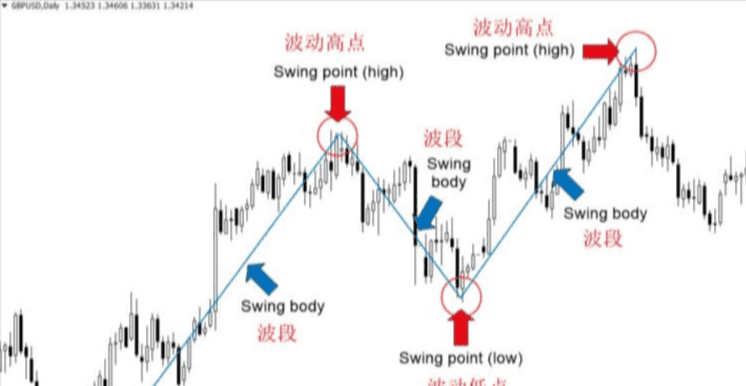
03 How to conduct swing trading?
Next, I will introduce six steps for swing trading.
1. Focus on the daily chart
Observe the daily chart more, as it provides the most comprehensive price trends and more reliable price signals.
But be careful: not all daily charts are worth paying attention to.
I mainly use the daily chart based on the New York closing price. Because the trading period closes at 5 PM Eastern Standard Time every 24 hours, this is also known as the 'closing time' of the forex market.
Therefore, I recommend that swing traders use the daily chart; if you have profited using the daily chart, you can try starting to use the 4-hour chart.
In general, a higher time frame means more reliable price action signals.
2 Drawing key support and resistance levels
Drawing key support and resistance levels is the most important part of the whole process. For swing traders, if key support and resistance levels are not found, profitability is impossible.
Next, I will introduce two important horizontal lines:
1. Support and resistance lines
Support and resistance are points on the chart that withstand continuous upward or downward pressure. Support levels are usually the lowest points in all chart patterns, while resistance is the highest point (peak) in the chart.
Additionally, support and resistance levels are generally not 'exact' levels; it is best to view them as a range.
2. Trend lines
Although trend lines are one of the most common methods in technical analysis, not all traders use them, possibly because most traders cannot draw the correct trend lines.
Generally speaking, an upward trend line connects the lows of each swing, while a downward trend line connects the highs of each swing.
3. Judging oscillation
If you have already learned to mark support and resistance zones on the daily chart, the next step is to use the high and low fluctuations to determine the oscillation.
There are mainly three types of fluctuations: upward trend, downward trend, and range trend.
1. Upward trend
Higher highs and higher lows; the figure below shows a typical upward trend:
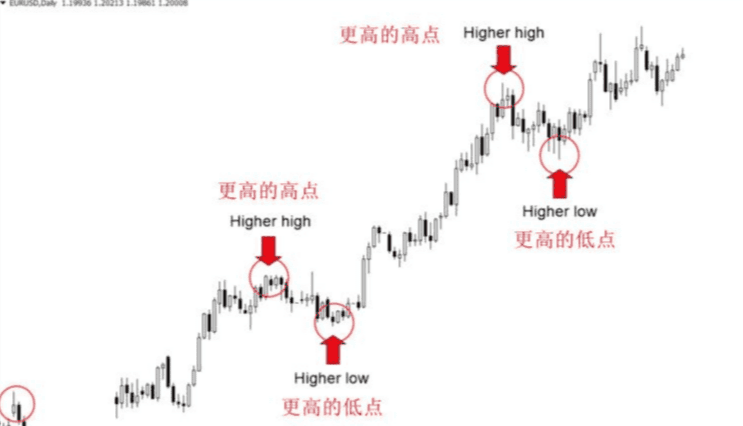
In the above figure, each swing high is higher than the previous one, indicating a buying opportunity in this bullish trend.
2. Downward trend
Lower highs and lower lows; the figure below shows a typical downward trend:
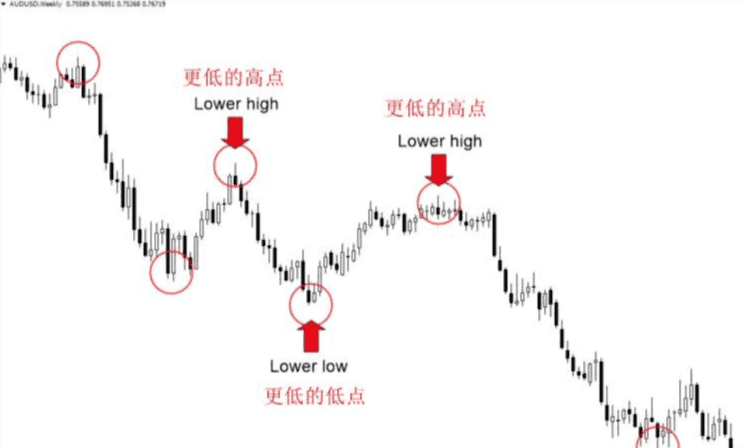
In the above figure, each swing high is lower than the previous one, indicating a selling opportunity.
3. Range trend
Horizontal movement, also known as a consolidation period, as shown in the figure below:
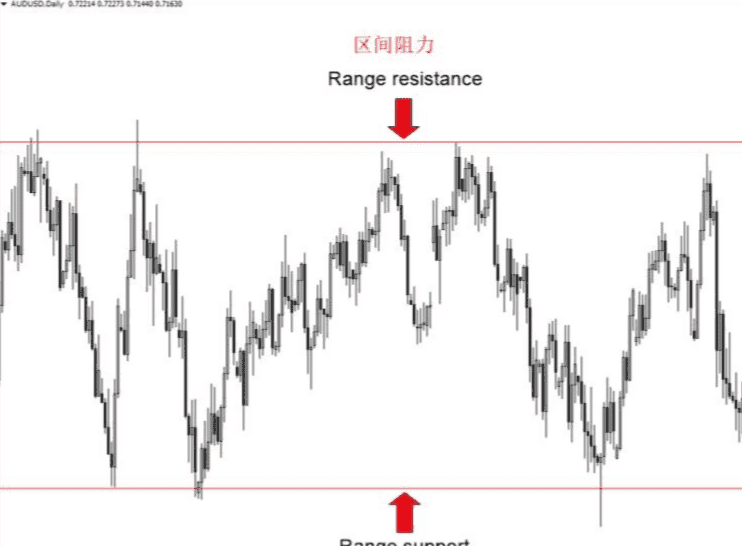
Range trends are the most common type of trend. Although no bullish or bearish trends appear in the figure above, swing traders can still profit within this range, and it may be easier to profit than in the other two oscillating trends.
What should be done?
Use support and resistance levels. As shown in the figure below, pay attention to the two pin bars in the chart:
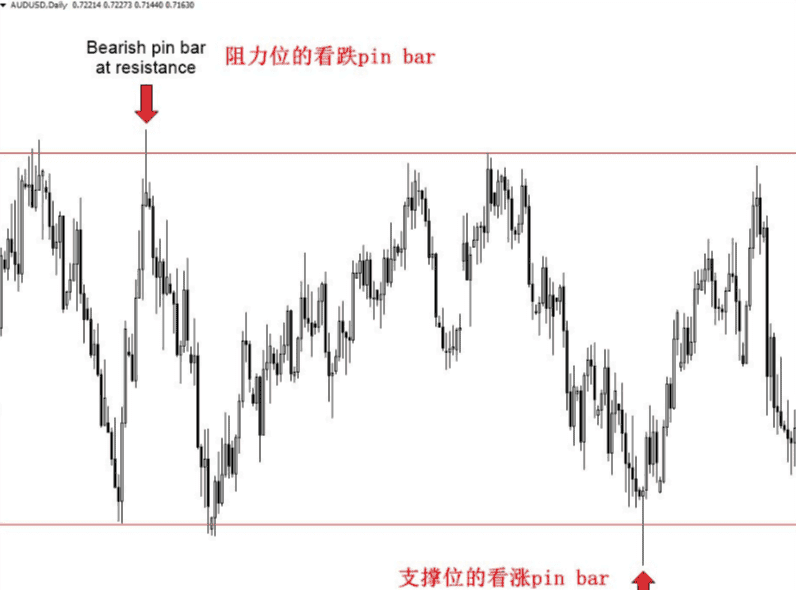
4. Look for price action signals
Through the above three steps, you have identified the current oscillation on the daily chart.
1. If the market is in an upward trend, then you should begin to pay attention to buy signals at key support levels, as shown in the figure below, where a bullish pin bar appears at the key support level.
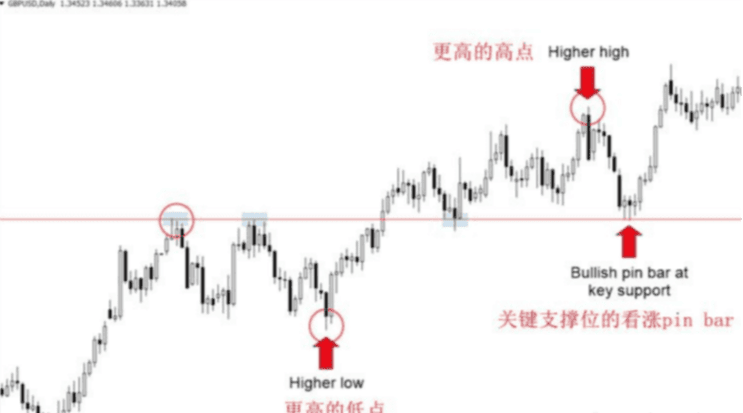
The bullish pin bar in the above image is a buy signal, indicating that we can profit in a sustained upward trend in the market.
2. If the market is in a downward trend, then pay attention to sell signals at resistance levels, as shown in the figure below:
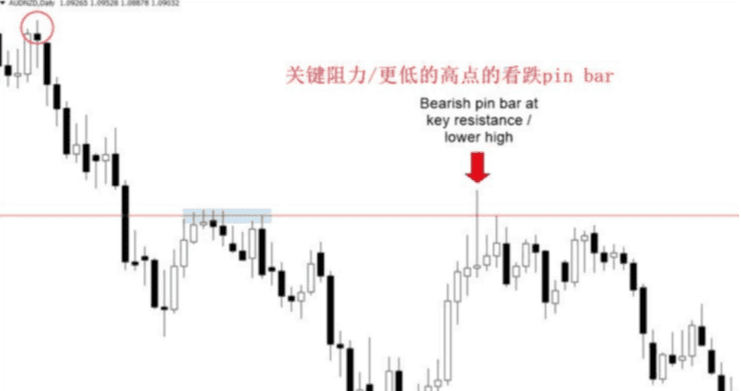
We can take the bearish pin bar in the chart as a sell signal.
In fact, for swing traders, capturing the entire swing is challenging; what we can do is to pay more attention to the changes in swings and patiently wait until the price trend is confirmed before entering the trade.
5 Determine the exit point
Determining the exit point has an important prerequisite: establish profit-taking and stop-loss levels before entering the market. This is because once you enter, your emotions will be influenced by market fluctuations.
So, how do we determine the exit point?
It's simple, still based on support and resistance levels, as shown in the figure below:
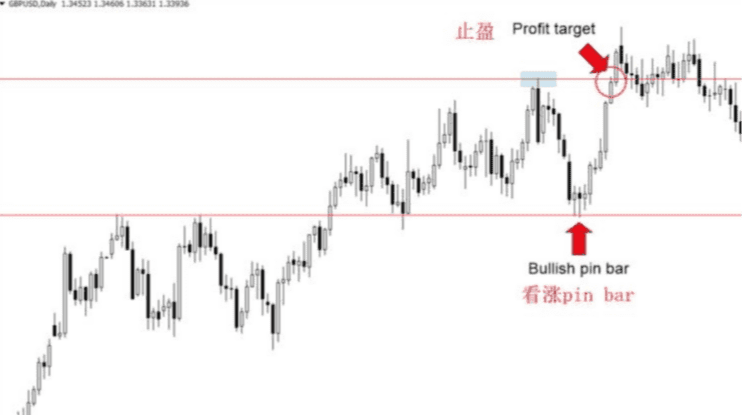
The above is a GBPUSD daily chart: It is clearly an upward trend, and the price has exceeded our set profit target.
When this happens, do not feel frustrated; we have captured most of the upward trend. Remember, in trading, do not be overly greedy.
Let's take a look at the AUDNZD daily chart: We can also determine the take profit based on support and resistance levels, i.e., the exit point. As shown in the figure below:
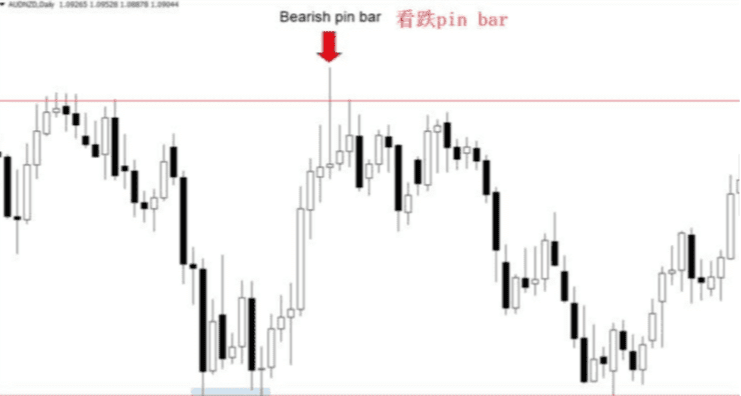
In summary, support and resistance zones and trend lines are the foundation of all trading setups. Once these are determined, entry and exit points become clear.
6. Calculate and manage risks
Current risks are usually calculated using the R-multiple; for example, a stop-loss of 100 points and a take-profit of 300 points is set at 3R. If your capital is 100 USD and you profit 500 USD, then the risk-reward ratio is 5R.
Risk management essentially means setting stop-loss and take-profit levels:
Stop-loss: The best stop-loss level is at the upper or lower end of the pin bar tail.
If a bullish or bearish engulfing pattern occurs, the stop-loss level should ideally be set 10 to 20 points above or below the candlestick.
Take profit: Taking profit is still related to key support and resistance levels. For swing traders, the key to profitability is to capture the fluctuations between support and resistance.
If an upward trend appears in the market, and a bullish pin bar forms at the support level, then the take profit should be set at the next key resistance level.
Still the same saying, if you don't know how to operate in a bull market, click on the old blog avatar, follow it, and plan for spot trading and contract passwords during the bull market, shared for free.